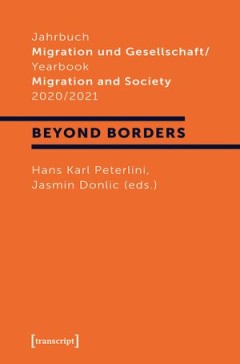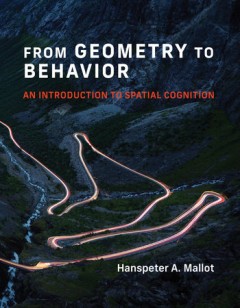Filter by

Snap to grid :a user's guide to digital arts, media, and cultures
"In Snap to Grid, an idiosyncratic guide to the interactive, telematic era, Peter Lunenfeld maps out the trajectories that digital technologies have traced upon our cultural imaginary. His evaluation of new media includes an impassioned discussion - informed by the discourses of technology, aesthetics, and cultural theory - of the digital artists, designers, and makers who matter most. "Snap to…
- Edition
- -
- ISBN/ISSN
- 058528850X
- Collation
- 1 online resource (xxv, 226 pages) :illustrations
- Series Title
- -
- Call Number
- -

Shaping the network society :the new role of civil society in cyberspace
"An outgrowth of the Seventh DIAC symposium held in Seattle in 2000"--Introduction.Information and computer technologies are used every day by real people with real needs. The authors contributing to Shaping the Network Society describe how technology can be used effectively by communities, activists, and citizens to meet society's challenges. In their vision, computer professionals are concern…
- Edition
- -
- ISBN/ISSN
- 9780262283250
- Collation
- 1 online resource (x, 433 pages) :maps
- Series Title
- -
- Call Number
- -

The working landscape :founding, preservation, and the politics of place
Based on the author's Ph. D. thesis, Harvard University, 2000.In America today we see rampant development, unsustainable resource exploitation, and commodification ruin both natural and built landscapes, disconnecting us from our surroundings and threatening our fundamental sense of place. Meanwhile, preservationists often respond with a counterproductive stance that rejects virtually any chang…
- Edition
- -
- ISBN/ISSN
- 9780262269803
- Collation
- 1 online resource (xvi, 425 pages).
- Series Title
- -
- Call Number
- -

Why architects draw
Examines the social uses of architectural drawing: how it acts to direct architecture; how it helps define what is important about a design; and how it embodies claims about the architect's status and authority. Case study narratives are included with drawings from projects at all stages.OCLC-licensed vendor bibliographic record.
- Edition
- -
- ISBN/ISSN
- 0262367785
- Collation
- 1 online resource (315 pages) :illustrations.
- Series Title
- -
- Call Number
- -

The Routledge Handbook of Taxation and Philanthropy
The Routledge Handbook of Taxation and Philanthropy ventures into a territory that is still widely unexplored. It contains 30 academic contributions that aim to provide a better understanding of whether, why, and how philanthropic initiatives, understood as voluntary contributions for the common good, can and should be fostered by states through tax incentives. The topic has been addressed from…
- Edition
- 3
- ISBN/ISSN
- 9781000514216
- Collation
- -
- Series Title
- -
- Call Number
- 650

From Geometry to Behavior: An Introduction to Spatial Cognition
- Edition
- -
- ISBN/ISSN
- 9780262377300
- Collation
- -
- Series Title
- -
- Call Number
- -
- Edition
- -
- ISBN/ISSN
- 9780262377300
- Collation
- -
- Series Title
- -
- Call Number
- -

Jahrbuch Migration und Gesellschaft / Yearbook Migration and Society 2020/20…
Migration is not a state of emergency, but a basic existential experience of humanity. It shapes contemporary societies by challenging established orders, creating transnational spaces beyond national hegemonies, creating new economies, influencing urban and communal ways of life, making inequality and precariousness visible locally and globally. Migration research as a social science does not …
- Edition
- 1
- ISBN/ISSN
- 9783839455913
- Collation
- -
- Series Title
- -
- Call Number
- 351.81 JAH j

Vienna Series In Theoretical Biology: Evolution "On Purpose": Teleonomy in Li…
A unique exploration of teleonomy—also known as “evolved purposiveness”—as a major influence in evolution by a broad range of specialists in biology and the philosophy of science. The evolved purposiveness of living systems, termed “teleonomy” by chronobiologist Colin Pittendrigh, has been both a major outcome and causal factor in the history of life on Earth. Many theorists have…
- Edition
- -
- ISBN/ISSN
- 9780262376013
- Collation
- -
- Series Title
- -
- Call Number
- -

Shaping the Network Society: The New Role of Civil Society in Cyberspace
- Edition
- -
- ISBN/ISSN
- 9780262283250
- Collation
- -
- Series Title
- -
- Call Number
- -
- Edition
- -
- ISBN/ISSN
- 9780262283250
- Collation
- -
- Series Title
- -
- Call Number
- -

From Geometry to Behavior: An Introduction to Spatial Cognition
An overview of the mechanisms and evolution of spatial cognition, integrating evidence from psychology, neuroscience, cognitive science, and computational geometry. Understanding how we deal with space requires input from many fields, including ethology, neuroscience, psychology, cognitive science, linguistics, geography, and spatial information theory. In From Geometry to Behavior, cognitiv…
- Edition
- Ed. 1
- ISBN/ISSN
- 780262377300
- Collation
- -
- Series Title
- -
- Call Number
- 516.3 MAL f
 Computer Science, Information & General Works
Computer Science, Information & General Works  Philosophy & Psychology
Philosophy & Psychology  Religion
Religion  Social Sciences
Social Sciences  Language
Language  Pure Science
Pure Science  Applied Sciences
Applied Sciences  Art & Recreation
Art & Recreation  Literature
Literature  History & Geography
History & Geography